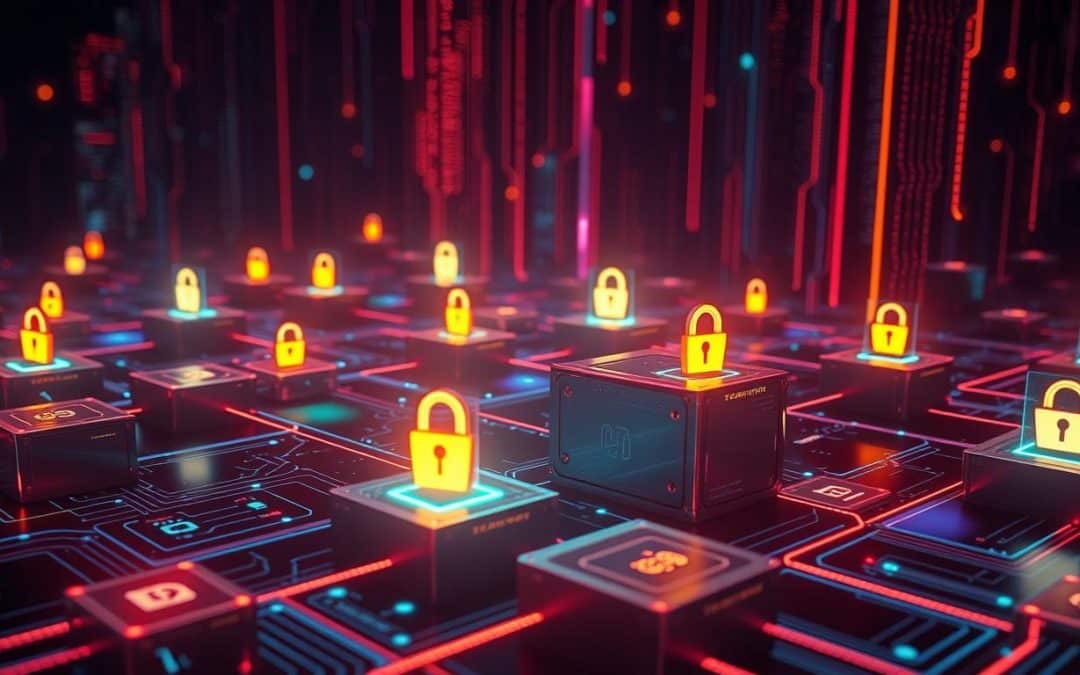The blockchain landscape in 2025 demands robust security measures to protect digital assets and transactions. Recent events like the $HAWK cryptocurrency crash and high-profile hacks underscore the critical need for enhanced security and compliance in blockchain applications. This comprehensive guide provides key insights on blockchain security best practices, emerging threats, and strategies to safeguard blockchain-based systems.
Key Takeaways
- Major security breaches and compliance issues highlight ongoing vulnerabilities in blockchain systems
- Understanding blockchain fundamentals is crucial for implementing effective security measures
- Best practices include multi-signature wallets, regular audits, and smart contract security
- Encryption and cryptography play a vital role in securing blockchain networks
- Regulatory compliance enhances security and builds trust in blockchain applications
- Emerging technologies like quantum-resistant cryptography will shape future blockchain security
Introduction to Blockchain Security
Blockchain technology offers a decentralized and transparent platform for various applications, but its growing adoption also increases security risks. Keeping blockchain systems secure is crucial to prevent financial losses and maintain user trust.
The Importance of Security in Blockchain
Blockchain’s inherent features like distributed ledgers and cryptography provide a foundation for security. However, vulnerabilities still exist that can compromise blockchain integrity and user assets. Understanding these risks is essential for protecting blockchain-based systems.
Overview of Common Blockchain Vulnerabilities
Key vulnerabilities in blockchain networks include:
- Smart contract flaws that can be exploited by attackers
- 51% attacks where a single entity gains majority control of the network
- Private key management issues leading to unauthorized access
Understanding Blockchain Technology Basics
A solid grasp of blockchain fundamentals is crucial for implementing effective security measures. Key components include:
- Blocks: The basic units containing validated transaction data
- Nodes: Computers or devices maintaining copies of the distributed ledger
- Consensus Mechanisms: Protocols ensuring agreement on transaction validity
Best Practices for Blockchain Security
Implementing robust security practices helps mitigate risks in blockchain applications:
Multi-Signature Wallets
Multi-signature wallets require multiple parties to approve transactions, reducing the risk of unauthorized access to funds.
Regular Security Audits
Frequent audits by reputable firms can uncover vulnerabilities in blockchain code, smart contracts, and overall system architecture.
Smart Contracts Best Practices
Thorough testing, code review, and adherence to established security patterns are essential for developing secure smart contracts.
Importance of Encryption in Blockchain
Encryption forms the backbone of blockchain security, ensuring data integrity and transaction privacy. Advanced cryptographic techniques protect blockchain ecosystems and enable secure cross-chain transfers.
Regulatory Compliance and Blockchain Security
Adhering to regulations like KYC/AML enhances blockchain security and prevents fraud. Compliance measures build trust with users and authorities while supporting the integration of blockchain solutions with traditional finance.
Choosing the Right Blockchain Security Tools
Selecting appropriate security tools is vital for blockchain projects. Essential software includes wallet protection, smart contract auditing platforms, and network monitoring systems.
Incident Response and Recovery Strategies
Developing a comprehensive incident response plan is crucial for mitigating the impact of security breaches. Key elements include clear communication protocols, stakeholder notification procedures, and regular backups of critical data.
Future Trends in Blockchain Security
Emerging technologies shaping the future of blockchain security include:
- Quantum-resistant cryptography to protect against future quantum computing threats
- AI-powered threat detection for proactive security measures
- Advanced security protocols aligned with evolving regulatory frameworks
By staying informed about these trends and implementing robust security measures, blockchain projects can build resilient systems that protect user assets and maintain trust in the evolving digital landscape.

